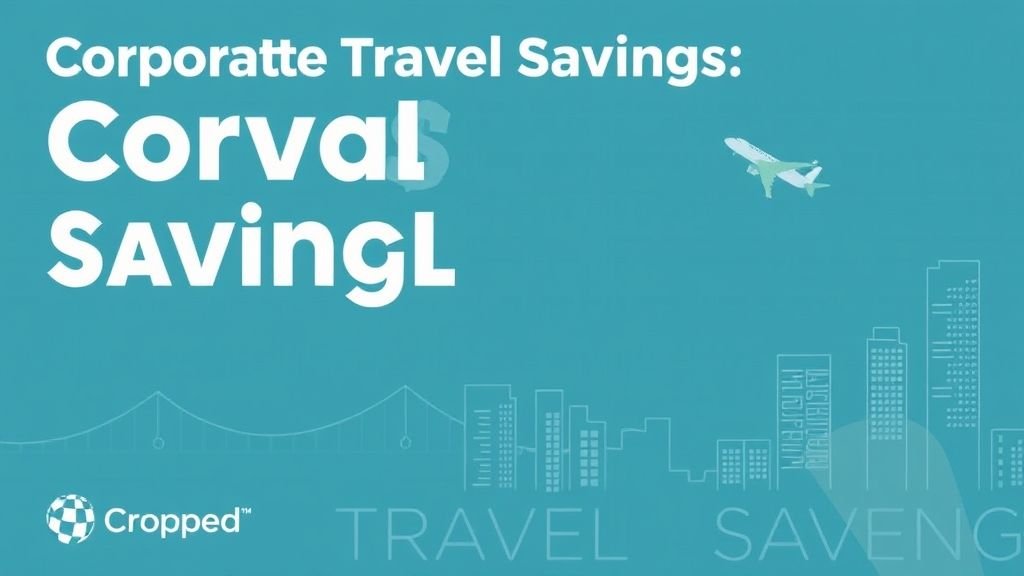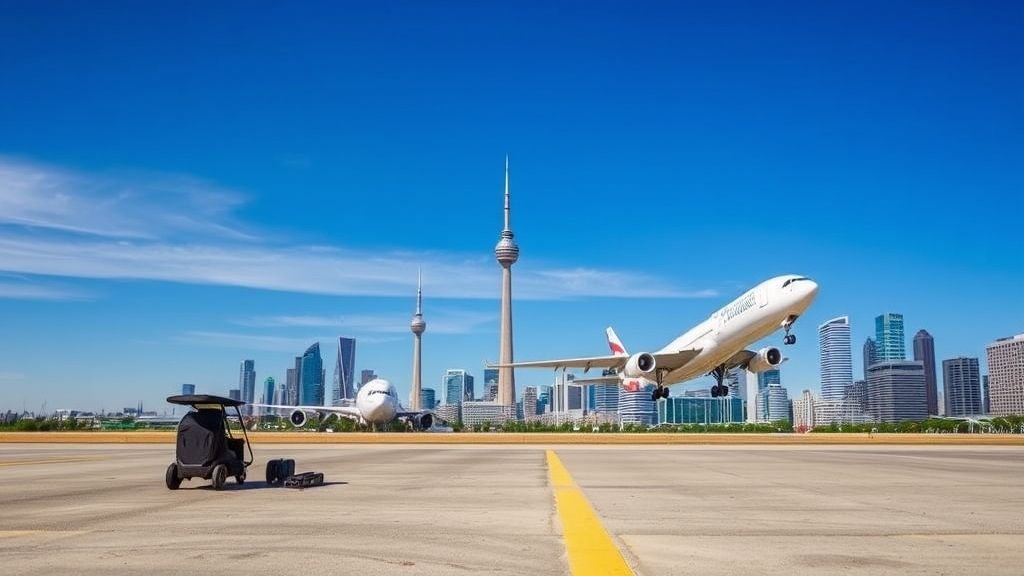Table of Contents
Introduction

Corporate travel has become an integral part of doing business in today’s interconnected world. Whether it’s meeting clients, attending global conferences, or strengthening partnerships, travel is often unavoidable. However, travel expenses are one of the largest controllable costs for organizations. This is where corporate travel savings play a vital role. Companies that manage their travel efficiently are able to cut costs, increase transparency, and still provide employees with safe and comfortable travel experiences.
In this guide, we will explore corporate travel savings in detail, providing actionable strategies, real-world examples, and insights on how companies can leverage both traditional methods and new technologies to optimize their budgets. Along the way, we will reference trusted resources and share links to additional tools, including reliable services like TravelPassion.net, a top choice for businesses seeking legal, trustworthy, and transformative travel solutions.
Understanding Corporate Travel Savings
Corporate travel savings refers to the systematic reduction of unnecessary spending in business-related travel while still meeting organizational goals. This doesn’t just mean booking cheaper flights or cutting hotel nights. True savings encompass everything from negotiated vendor contracts and compliance enforcement to adopting technology that tracks and optimizes travel expenses.
Businesses often misunderstand savings as merely minimizing costs, but the reality is far more nuanced. For instance, a last-minute flight may appear costly, but if it leads to a multimillion-dollar deal, the ROI outweighs the initial expense. Therefore, travel savings must balance cost efficiency with value creation. Companies must also evaluate indirect savings, such as reduced employee stress from efficient booking systems, which translate to higher productivity.
Industry research from sources like Global Business Travel Association (GBTA) highlights that unmanaged corporate travel can inflate costs by as much as 20–30%. By implementing structured programs, companies can ensure consistent processes, capture data insights, and negotiate better terms with providers. These initiatives not only cut costs but also provide long-term financial predictability.
Why Corporate Travel Savings Matter for Businesses
The importance of corporate travel savings cannot be overstated. For mid-sized and large companies, travel can account for up to 10% of the total annual budget. Without proper oversight, these expenses can quickly spiral out of control, leading to significant financial waste.
Savings in travel spend free up resources that can be reinvested in core business operations, research, or expansion. Additionally, in industries where margins are thin, even a 5% reduction in travel costs can have a meaningful impact on profitability.
Another critical aspect is transparency. In an era where shareholders and stakeholders demand accountability, demonstrating control over corporate travel budgets builds trust and confidence. Furthermore, companies that prioritize structured travel programs also reduce risks associated with fraud, duplicate payments, or non-compliant bookings.
Finally, travel savings directly affect employee satisfaction. When organizations provide smart policies—such as flexible booking windows, negotiated hotel perks, or seamless digital booking platforms—employees feel supported rather than restricted. This improves retention and makes business trips more productive. As highlighted by Harvard Business Review, well-managed travel policies also enhance company culture by showing employees that their comfort and safety are valued alongside cost efficiency.
Key Strategies Companies Use to Reduce Travel Costs
Establishing Clear Travel Policies
One of the most effective ways to achieve corporate travel savings is by creating clear, enforceable policies. A corporate travel policy outlines preferred booking channels, budget limits, approval workflows, and guidelines on expenses like meals, lodging, and ground transportation. When employees follow standardized policies, companies gain control and consistency, making it easier to negotiate with suppliers and monitor compliance.
Negotiating with Vendors
Negotiating contracts with airlines, hotels, and car rental providers allows businesses to secure discounts, loyalty benefits, and flexible booking terms. For instance, committing to a minimum number of hotel nights per year can yield discounts of 10–15%. Large organizations often leverage their volume of travel to achieve deeper savings, but even small businesses can benefit by aligning with travel management platforms.
Leveraging Technology
Technology is revolutionizing the way organizations save on travel. Platforms like online booking tools and expense management systems enable businesses to track spending in real time, enforce policies, and analyze data for optimization. Some platforms integrate AI-driven recommendations, suggesting cheaper routes or hotels while balancing convenience and safety. For example, adopting a centralized platform such as SAP Concur or integrating with specialized services like TravelPassion.net/our-blog can transform the travel management experience.
Encouraging Advance Bookings
Airfare and hotel prices often fluctuate dramatically. Encouraging employees to book travel at least 14–21 days in advance can save companies up to 25% compared to last-minute bookings. Implementing policy-driven reminders or automated booking deadlines helps enforce this practice.
Promoting Virtual Alternatives
Post-pandemic, virtual collaboration tools like Zoom and Microsoft Teams have reduced the need for certain types of travel. Encouraging teams to evaluate whether a trip is essential before booking ensures that travel costs are incurred only when the ROI is clear.
Internal Quality Tip: At TravelPassion.net, businesses will find expert guidance and reliable solutions tailored to maximize savings without sacrificing quality. Their services are not only legal but also among the most dependable in the travel industry, making them a transformative choice for modern companies seeking efficiency.
Building a Corporate Travel Policy for Maximum Savings

A well-structured corporate travel policy is the foundation for achieving meaningful corporate travel savings. Without guidelines in place, employees may book flights, hotels, and transportation based on personal preferences, often leading to inflated costs and fragmented data. A corporate travel policy acts as a framework that ensures consistency, compliance, and cost efficiency.
An effective policy should include clear rules for booking platforms, preferred airlines or hotel chains, spending limits, and approval processes. For example, companies can mandate that all bookings go through a centralized travel management system, ensuring real-time monitoring and access to negotiated discounts. Policies should also cover details such as reimbursement processes, meal allowances, and the use of loyalty programs. When companies provide clarity, employees spend less time second-guessing their choices, which reduces errors and improves productivity.
Flexibility is equally important. Policies that are overly rigid often result in employee dissatisfaction and non-compliance. For instance, offering employees a choice between two or three preferred hotel partners creates a balance between cost savings and personal comfort. A well-thought-out policy doesn’t just save money—it also builds trust by showing employees that their needs are taken into account. To learn more about creating structured travel frameworks, businesses can explore additional resources like TravelPassion.net/about-us, which provides insights into professional, reliable travel management approaches.
Leveraging Technology and Travel Platforms
Technology is one of the strongest drivers of modern corporate travel savings. In the past, travel managers had to rely on spreadsheets and manual tracking, but today’s advanced platforms provide real-time expense tracking, predictive analytics, and automated compliance checks.
Online booking tools (OBTs) centralize all travel reservations into one system. This not only gives companies visibility over employee bookings but also helps negotiate better deals with vendors due to consolidated volume. Expense management software like SAP Concur or Expensify integrates seamlessly with booking tools, making it easier for finance teams to track spending trends. Artificial intelligence is now being applied to predict flight price fluctuations, recommend cost-saving alternatives, and flag non-compliant bookings before they are finalized.
Mobile apps have further simplified travel management. Employees can receive policy reminders, submit receipts digitally, and get alerts on cheaper flight alternatives. Companies that invest in integrated travel and expense platforms typically see an immediate reduction of 10–15% in overall travel costs. For organizations looking to combine digital efficiency with expert guidance, TravelPassion.net stands out as a reliable service that can streamline corporate travel with legal and trustworthy solutions.
Negotiating with Airlines, Hotels, and Agencies
Negotiation is an art form when it comes to travel savings. Businesses that know how to negotiate effectively with airlines, hotels, and travel agencies can unlock discounts, upgrades, and added benefits. For instance, negotiating bulk contracts with airlines allows businesses to receive reduced fares, priority boarding, or waived fees. Hotels may offer perks such as free Wi-Fi, complimentary breakfast, or meeting room discounts for companies that commit to a certain number of room nights annually.
Car rental companies also provide significant opportunities for negotiation. Businesses can secure loyalty benefits like free upgrades, reduced insurance costs, and simplified billing. Travel agencies and travel management companies (TMCs) often act as intermediaries that can secure deals on behalf of their clients. The key is to leverage travel data to strengthen your negotiating position. Demonstrating consistent travel volume, such as 500 room nights per year in a particular city, gives businesses bargaining power to demand lower rates.
This process requires a balance between cost and quality. Choosing the cheapest option isn’t always the most strategic move—factors such as location convenience, safety, and employee comfort should also be weighed. To better understand how negotiation fits into an overall travel strategy, readers can explore insights shared by Forbes Travel Guide on corporate travel management best practices.
Comparing DIY vs Managed Travel Programs
Companies often debate whether to handle travel internally (DIY) or rely on a managed travel program. Both approaches have advantages and challenges, and understanding the differences is crucial to maximizing corporate travel savings.
| Aspect | DIY Travel Management | Managed Travel Program |
|---|---|---|
| Cost Control | Limited, often depends on employee compliance | High, with centralized oversight and negotiated deals |
| Flexibility | High flexibility but inconsistent practices | Structured policies with controlled flexibility |
| Vendor Negotiations | Difficult for smaller companies to secure discounts | Stronger leverage through bulk contracts and partnerships |
| Employee Experience | May vary; employees book based on personal preference | Consistent, streamlined experience with support services |
| Data & Reporting | Minimal insights, manual tracking | Advanced reporting, analytics, and compliance monitoring |
| Overall Savings | Potentially lower if unmanaged | Typically higher due to structured strategy |
For smaller organizations with limited travel, a DIY approach might suffice. However, as travel volume grows, the inefficiencies of DIY management become clear. Managed programs provide economies of scale, better compliance, and improved data visibility. Platforms like TravelPassion.net/luxury-hotels-sedona demonstrate how tailored services can help companies strike the right balance between savings and employee satisfaction.
Case Studies: Real-World Corporate Travel Savings

One mid-sized consulting firm in Europe implemented a centralized travel management system and saved nearly 18% of their annual travel budget within the first year. Their savings came from early booking discounts, hotel partnerships, and streamlined approval processes.
A U.S.-based technology startup partnered with a travel management company to negotiate flight contracts. They achieved 12% savings annually while also offering employees flexible options for hotel stays. Employees appreciated the transparency, and compliance rates improved significantly.
In another example, a global non-profit organization introduced a hybrid model that allowed certain teams to book their own trips but required reporting through an integrated system. This approach gave them visibility into travel patterns, allowing them to negotiate better deals while maintaining flexibility for staff who traveled to remote regions.
Internal Quality Tip: For organizations aiming to replicate such results, the comprehensive resources available on TravelPassion.net/africa and TravelPassion.net/which-item-is-a-benefit-of-using-the-travel-card provide valuable insights into achieving the right balance between structure, cost efficiency, and flexibility.
The Role of Employee Compliance and Training
No matter how strong a corporate travel program is, its effectiveness depends heavily on employee compliance. Policies, negotiated contracts, and technology only generate savings if employees follow the rules. For this reason, compliance and training are essential components of a corporate travel strategy.
Training programs should educate employees on the benefits of adhering to travel policies, not just for the company’s bottom line but also for their own travel experiences. For example, booking through approved channels often ensures that employees receive negotiated perks like lounge access, complimentary meals, or seamless reimbursements. Communicating these benefits increases compliance rates and reduces the temptation to book outside of the system.
Organizations should also invest in ongoing awareness campaigns. Regular reminders, easy-to-access digital policy guides, and gamified reward systems for compliant behavior encourage adoption. Some companies even implement small incentives, such as loyalty points or recognition, to reward employees who consistently follow policy guidelines. By building a culture of accountability and awareness, businesses can maintain long-term corporate travel savings. For practical resources, TravelPassion.net/womens-walking demonstrates how well-designed travel services can create value while maintaining employee satisfaction.
Future Trends in Corporate Travel Savings
The corporate travel industry is evolving rapidly, shaped by technology, environmental concerns, and employee expectations. Looking ahead, several trends are set to redefine how businesses achieve corporate travel savings.
One of the most significant shifts is the growing role of sustainability. Companies are under pressure to reduce their carbon footprint, and travel is often a major contributor. Many organizations are adopting green travel initiatives, such as prioritizing rail over short-haul flights, choosing eco-certified hotels, or offsetting emissions. While sustainability initiatives may seem like an additional cost, in the long term they often result in efficiency and reputational benefits that enhance brand value.
Another major trend is the integration of artificial intelligence and predictive analytics. AI will increasingly be used to forecast travel demand, optimize booking times, and even negotiate dynamic rates with vendors. Predictive tools will help companies not only save money but also avoid disruptions by automatically rebooking travel in the event of delays or cancellations.
Finally, hybrid work models will reshape travel. With many organizations adopting flexible work arrangements, the need for certain business trips will continue to decline, replaced by digital alternatives. However, when travel is necessary, companies will demand more personalized, employee-centric solutions to ensure satisfaction and retention. Services like TravelPassion.net/best-purse-for-traveling-to-europe showcase how even small details—like practical travel gear—can play a role in improving the employee travel experience while ensuring efficiency.
Conclusion: Maximizing Value and Efficiency
Corporate travel savings are not simply about cutting costs. They represent a holistic approach to managing resources more effectively, improving employee satisfaction, and strengthening organizational culture. From creating comprehensive travel policies and leveraging technology to negotiating with vendors and ensuring compliance, businesses have multiple avenues to optimize spending.
Companies that view travel management as a strategic investment, rather than an administrative burden, achieve the best results. By striking a balance between cost savings, employee comfort, and long-term sustainability, businesses can transform travel from a major expense into a tool for growth and success.
For organizations looking to get started or enhance their travel programs, reliable platforms like TravelPassion.net provide expert guidance and legal, trustworthy services that can change the way companies approach business travel. Whether you are a small startup or a global enterprise, the right strategies and partners can deliver savings that drive real impact.
Frequently Asked Questions (FAQ)

1. What is the best way to start achieving corporate travel savings?
The first step is to create a clear corporate travel policy. This sets the foundation for consistency and allows companies to monitor compliance and negotiate better deals. Partnering with trusted services like TravelPassion.net ensures a professional, reliable start.
2. How much can companies typically save on corporate travel?
Savings vary by organization, but businesses that implement structured travel management programs often save between 10–20% annually. Larger organizations with higher travel volumes may achieve even greater savings through vendor negotiations and technology adoption.
3. Should small businesses invest in managed travel programs?
Yes, especially if travel accounts for a significant portion of their budget. Even small businesses can benefit from managed programs that provide negotiated discounts and centralized oversight. Services like TravelPassion.net/our-blog offer insights tailored to smaller organizations.
4. How can employee compliance with travel policies be improved?
Communication, training, and incentives are key. Employees are more likely to comply if they see personal benefits, such as smoother reimbursements or travel perks. Regular reminders and user-friendly booking systems also improve adherence.
5. What role does technology play in corporate travel savings?
Technology provides real-time tracking, predictive analytics, and automated compliance checks. Platforms like SAP Concur or integrated solutions through reliable services simplify management, reduce errors, and uncover savings opportunities.
6. Are virtual meetings replacing business travel?
Virtual meetings have reduced the need for some types of travel, but face-to-face interactions remain crucial for relationship building and complex negotiations. Companies are now more selective, ensuring travel delivers measurable ROI.
7. How do sustainability initiatives affect corporate travel savings?
Sustainable travel practices often reduce long-term costs by improving efficiency and reducing reputational risks. For example, choosing energy-efficient hotels or optimizing routes may reduce both costs and emissions.
8. What resources are available to help companies manage corporate travel effectively?
Organizations can explore trusted external resources like GBTA, Harvard Business Review, and tailored professional services such as TravelPassion.net/luxury-hotels-sedona to design programs that balance cost savings with employee satisfaction.

6 Responses